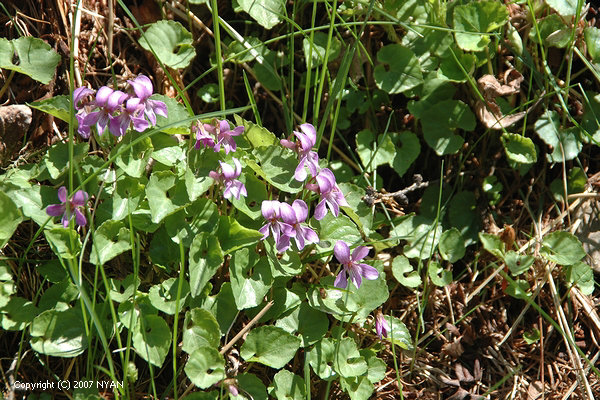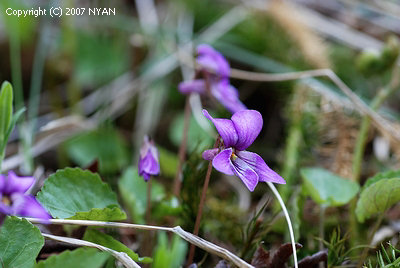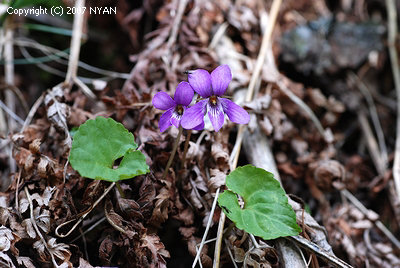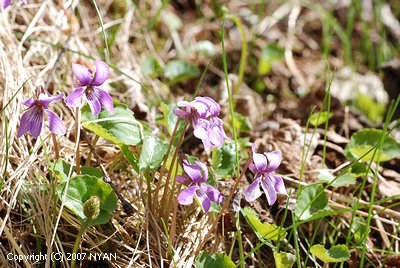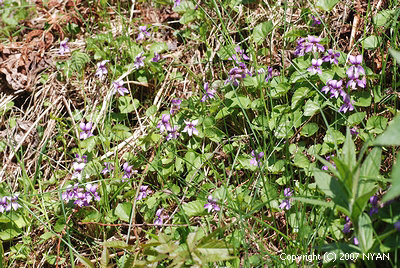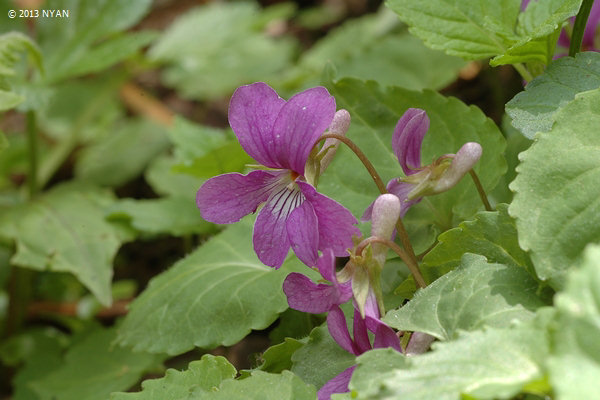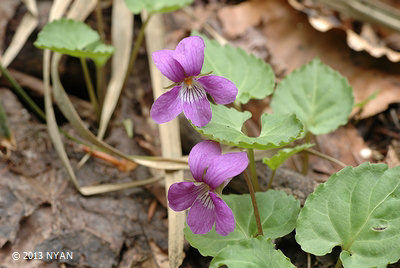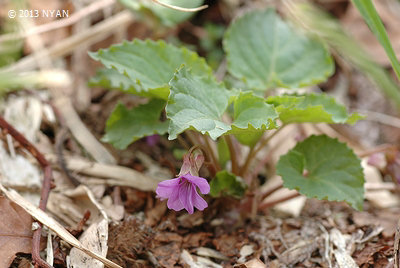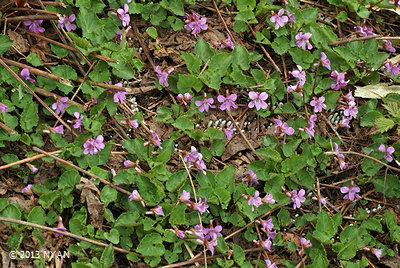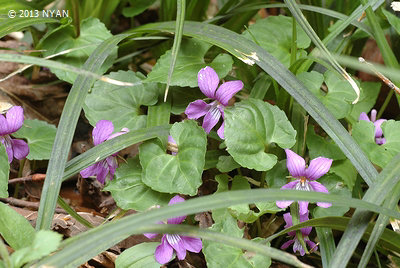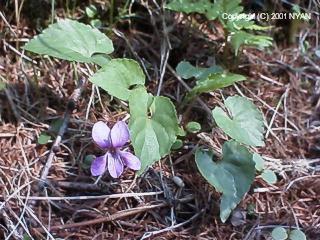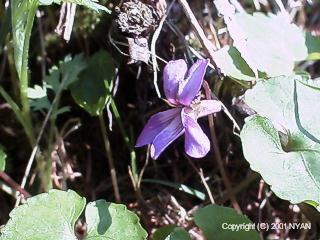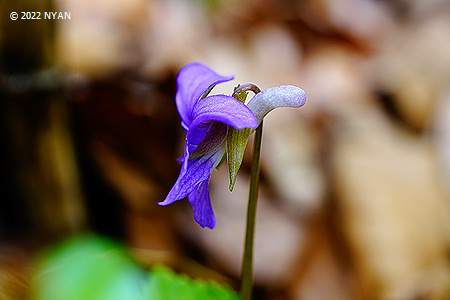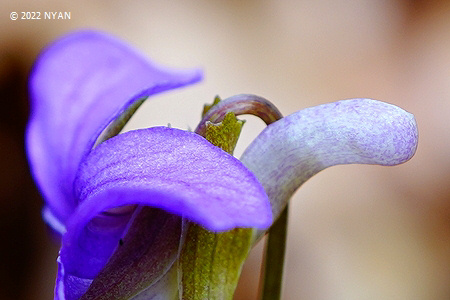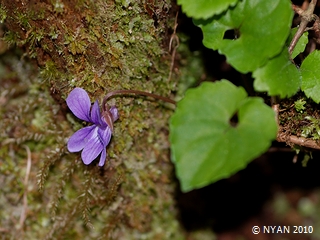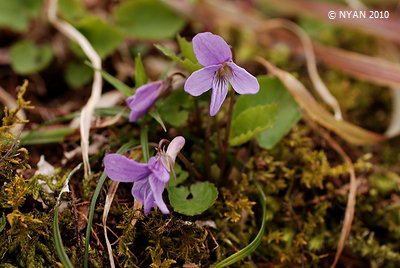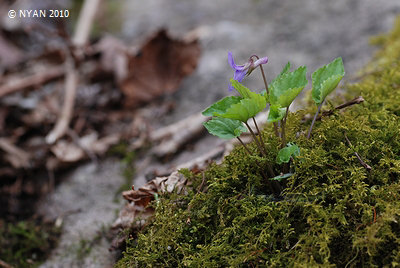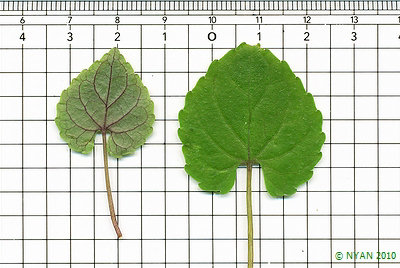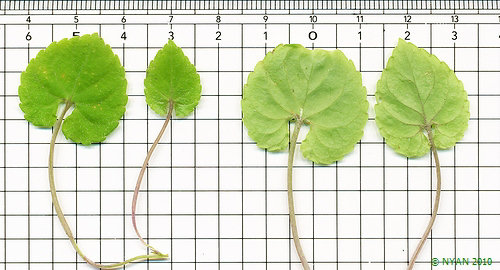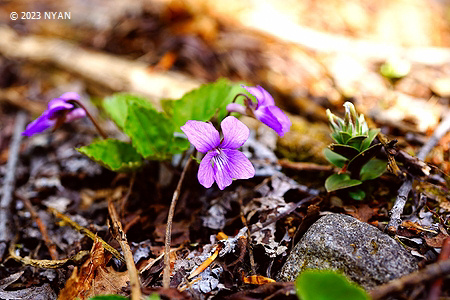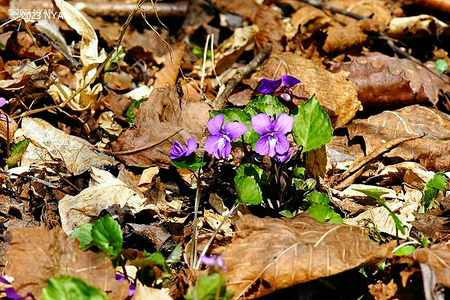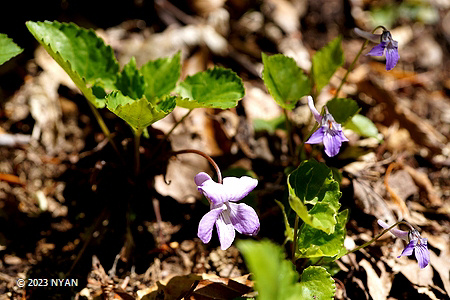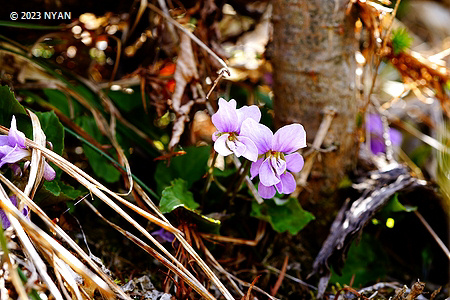| Section | Patellares (Boissier) Nakai | |
|---|---|---|
| Scientific Name | Type species | Viola selkirkii Pursh ex Goldie : {Miyama Sumire} Published in: Edinb. Philos. Jour. 6: 324. (1822) |
| Variety | ||
| Form |
Viola selkirkii Pursh ex Goldie f. variegata (Nakai) F.Maek. : {Fuiri-miyama Sumire} Published in: ESJ 3: 217 (1954)
Viola selkirkii Pursh ex Goldie f. alba Tatew. : {Sirobana-miyama Sumire}
Viola selkirkii Pursh ex Goldie f. subglabra (W.Becker) M.Mizush. : {hadaka-miyama Sumire}Published in: J. Jap. Bot.,27: 144 (1952)
|
|
| Synonym |
Viola borealis Weinm. Published in: Linnaea 10: 66. (1836)
Viola carnosula W.Becker Published in: Beih. Bot. Centralbl. 36: II. 57. (1918)
Viola crassicornis W.Becker & Hultén Published in: Bot. 22A(3): 3. (1928)
Viola erecta Myers Published in: Am. Natural. 4: 438. (1870)
Viola funghuangensis P.Y.Fu & Y.C.Teng Published in: Fl. Pl. Herb. Chin. Bor.-Orient. 6: 292. (1977)
- Omitted for many others -
| |
| Origin | selkirkii : Originating in a name of a person. cf.: Thomas Douglas, 5th Earl of Selkirk, 1771-1820, Scotland | |
| Common names | 【Chinese】深山堇菜、【Korean】뫼제비꽃、【English】great spurred violet, northern violet | |
| Stalk Form | The individual leaves and flowering stalks emerge directly from the rootstock. | |
| Habitat | In the Mainland, it grows naturally on moist deciduous forest in the high-mountain. In Hokkaido, it grows naturally in the plain, too. | |
| Distribution | Japan domestic | Widely distributed in Hokkaido, east-area in Honsyu-island, Shikoku-island. |
| Japan overseas | It is widely distributed from the cold temperate zone of the Northern Hemisphere to the subarctic zone. | |
| Others | ||
| Flower | Shape | Small to middle size. Side valves are hairless. |
| Color | Light crimson is common. And vivid crimson violet color may be seen a lot. | |
| Spur | Long cylindrical shape (6-8mm). | |
| Season | Late and short term. | |
| Stigma | Inverted triangle and protrudes. | |
| Aromatic | Unscented (or weakly scented). | |
| Others | The center of the flower is white, and the lip has purple stripes. The calyx appendage is large. | |
| Leaf | Shape | 3 - 6cm long x 2 - 3cm wide. Round heart shape and opens flat. Pointed, heart-shaped at the base. Summer leaves get bigger. |
| Color | Bright green. The back is slightly whitish. | |
| Others | The leaves may be thin and shiny. Many are dented upward. | |
| Seed | Shape | Oval, medium grain. It is large compared to the size of the fruit. |
| Color | Light brown. | |
| Others | The fruits are medium-sized. Light green or light brownish. There are some brown spots. | |
| Characteristics of roots | Whitish and elongated. It has the property of being shallow and wide. Make adventitious buds. | |
| Endangered Information | Saitama:EndangeredⅡ, Tokyo:EndangeredⅡ, Shizuoka:EndangeredⅠ, Tottori:EndangeredⅠ, Kochi:EndangeredⅡ, Ehime:Naear Endangered | |
| Type Specimen | Montreal (Canada) | |
| Chromosome Number | 2n=24 (Rudyka, E. G. 1984. Chromosome Numbers in vascular plants from the southern part of the Soviet Far East. Bot. Zhurn.) |
|
| Reference Information | ||
| Others | Since sprouts are formed and propagated from the tips of thin stolons that appear after the flowers, they often grow in clusters all over. | |

